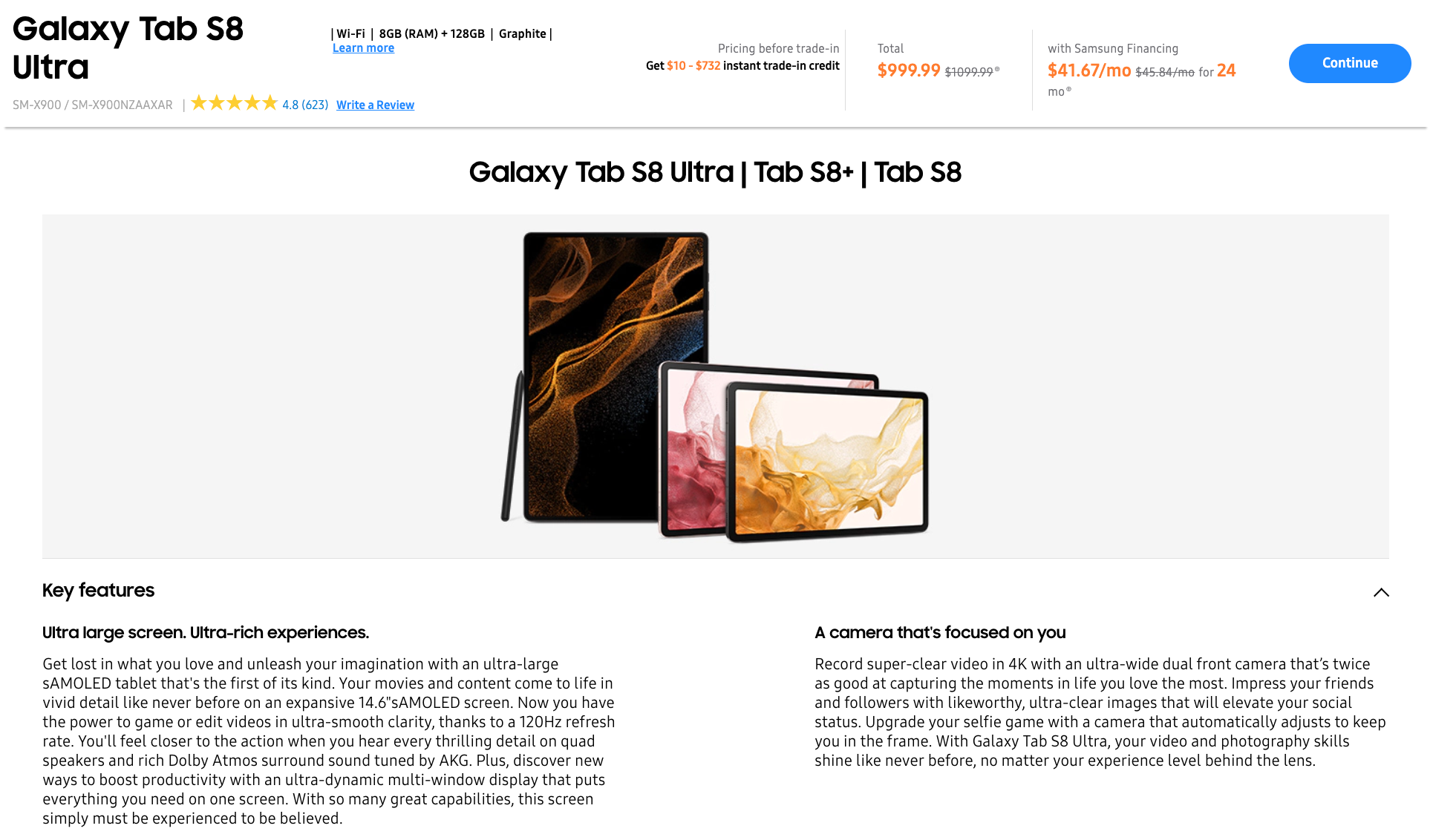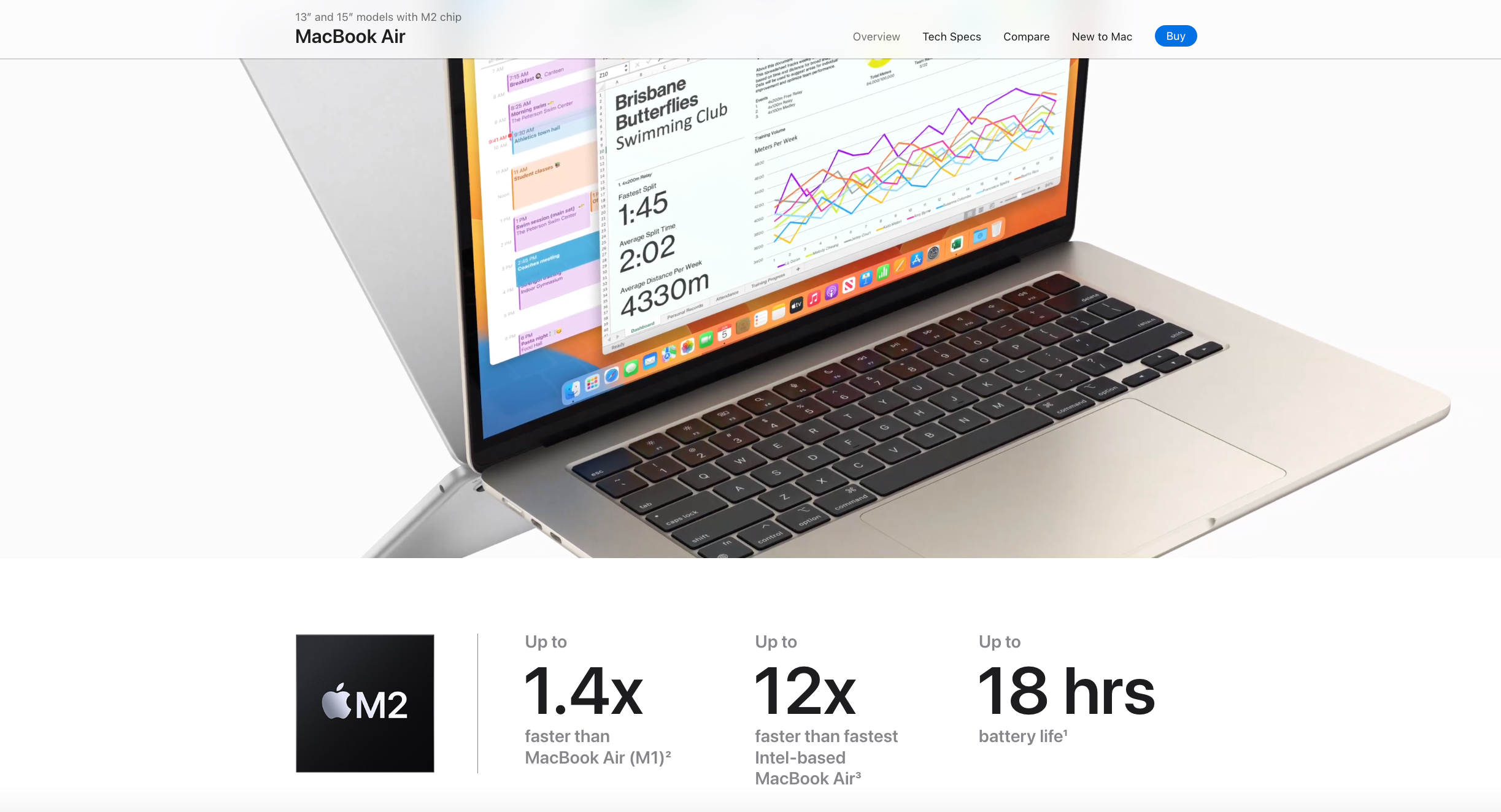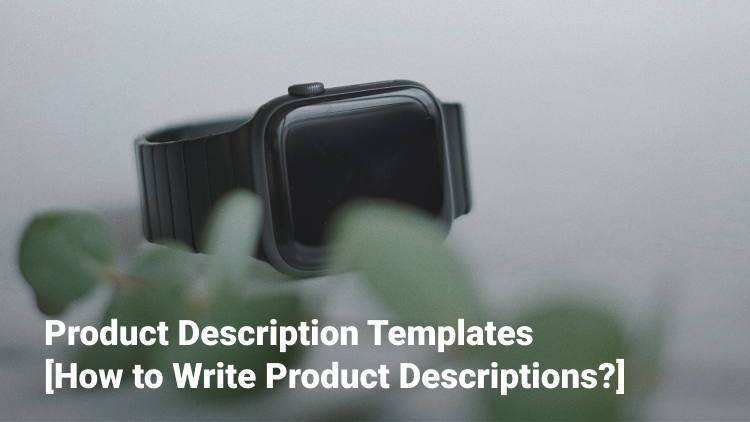- Why are product descriptions important?
- 4 Recommendations to write converting product descriptions
- A Product Description Template for You to Start With
- Conclusion
Are you struggling to create compelling and effective product descriptions for your eCommerce business? Look no further! In this article, we will delve into the power of product description templates and how they can simplify the process of crafting engaging descriptions that drive sales.
Whether you’re a beginner or an experienced marketer, discover how utilizing a product description template can enhance your product pages and captivate your target audience.
What Is the Importance of Product Descriptions?
Product descriptions are crucial information about the product, highlighting its features and benefits and creating an emotional connection with the potential buyer. A well-crafted product description can make the difference between a customer making a purchase or moving on to a competitor.
Remember, when crafting product descriptions, it is important to understand your target audience, use language that resonates with them, and focus on the unique selling points and benefits of your product. By investing time and effort into creating compelling product descriptions, you can significantly improve your conversion rates and drive more sales.
6 Reasons Why Product Descriptions Are Influential
- Informative: Product descriptions provide essential details about the product, such as its specifications, dimensions, materials, and functionality. This information helps customers understand what they are buying and ensures they have accurate expectations.
- Persuasive: A compelling product description goes beyond listing features and conveys the value and benefits of the product. It highlights how the product solves a problem, improves the user’s life, or fulfills a desire. By presenting these benefits in a persuasive manner, the description can convince customers that the product is worth buying.
- Differentiation: In a competitive market, product descriptions play a crucial role in setting your offerings apart from competitors. By emphasizing unique features, quality craftsmanship, or exclusive benefits, a product description can demonstrate why your product is superior or distinctive.
- Emotional Connection: Product descriptions have the power to evoke emotions and create a connection with potential customers. By using descriptive language, storytelling techniques, and appealing to the senses, a well-written description can make customers envision themselves using the product and experiencing the benefits firsthand.
- SEO Optimization: Optimizing product descriptions with keywords can improve search engine rankings, making it easier for potential customers to find your products. Well-optimized descriptions can attract organic traffic and increase the chances of conversions.
- Trust and Credibility: A clear and detailed product description helps establish trust with customers. It shows that you have taken the time to provide accurate information and showcases your commitment to quality. Including social proof, such as customer reviews or testimonials, can further enhance credibility and influence purchase decisions.
4 Recommendations to Write Product Descriptions That Convert
Fortunately, generating persuasive product descriptions that drive sales is not a complex task. By adhering to a few fundamental principles, you can effectively create compelling descriptions.
In the following section, we will explore the four essential strategies for achieving this goal. Additionally, you will find product description examples and a product description template to help you commence the process.
1. Create a detailed, compelling product description
It is commonly mentioned that internet users have limited attention spans, leading to the temptation of providing minimal information about products to avoid overwhelming potential customers. However, this strategy can have negative consequences.
Contrary to certain online scenarios, when it comes to shopping, people are willing to invest time and effort. The majority of potential buyers engage in thorough research before making a purchase. They are unlikely to choose retailers that offer incomplete or misleading information.
To effectively encourage conversions, it is crucial to provide customers with the comprehensive details they seek, like here:

To increase the likelihood of customers clicking the “buy” button, it is important to:
- Present essential information about the product, including details like size, color, material, and technical details.
- Emphasize all the features of the item and clearly explain its functionality and potential uses.
- Ensure the accuracy of every piece of information displayed on your product page.
- Provide a comprehensive amount of information to potential customers, making them more inclined to make a purchase.
2. Focus on the Product’s Benefits
While it is crucial to offer comprehensive information, it doesn’t imply that your product descriptions should be dull and factual. A product page should not only inform but also persuade the consumer.
To achieve this, it is essential to craft customer-centric product descriptions:

Prospective customers are eager to determine if your offering can improve their lives.
- Immediately communicate the benefits of your product to ensure clarity.
- Identify the pain points of your target customers and address them effectively. Demonstrate how your product simplifies tasks, alleviates frustrations, or enables new possibilities.
- Rather than relying on guesswork, conduct thorough research and develop a comprehensive buyer persona.
When creating your product descriptions, it is important to “front-load” the information by focusing on the customer’s benefits. Rather than starting with specific details like the number of processor cores, begin by highlighting how the customer will experience lightning-fast app opens.
Once you have successfully sold them on the key advantages of the product, you can then delve into the finer details.
3. Use Words That Show Power
Until now, our discussion has centered around the content of your product descriptions. However, the ideas conveyed are not the only crucial aspect. The specific words you choose hold equal significance.
Certain words have the power to compel people to make a purchase, while others may not. To enhance your product sales, it is vital to prioritize the use of attention-grabbing and persuasive terminology.

Incorporating certain words into your product descriptions can be highly effective. Here are some key terms to consider:
- “You”: By framing your product descriptions from the customer’s perspective, you create a more personalized connection with potential buyers.
- Sensory terms: Words such as “see,” “hear,” and “feel” engage the customers’ senses, allowing them to envision the experience of using your product.
- Positive power words: Utilizing impactful words like “empower,” “effortless,” “striking,” and “delight” evokes emotions, captures attention, and makes your descriptions stand out. However, it is crucial to ensure that your product genuinely delivers on these claims.
While incorporating these words, it is important to strike a balance and ensure that your product descriptions remain authentic, accurate, and aligned with the actual benefits and features of your product.
4. Writing Product Descriptions with Relevant Keywords
It is essential to address the significance of keywords in product descriptions, as they offer two primary advantages. Firstly, incorporating keywords enhances the Search Engine Optimization (SEO) of your product pages.
This ensures that potential customers can easily find your eCommerce site through search engines such as Google.

Furthermore, keywords play a crucial role in signaling to potential customers that your product is pertinent to their needs. When customers search for specific terms and come across those same phrases in your product description, it instills confidence that your item aligns with their requirements.
This reinforces their belief that your product is precisely what they are seeking.
To incorporate keywords effectively into your product descriptions, follow these steps:
- Conduct thorough keyword research to identify the phrases potential customers are likely to use when searching for products similar to yours.
- Choose one or more primary keywords for each product, ensuring that you also include relevant long-tail keywords.
- Keep these keywords accessible while writing your product description and strategically incorporate them in multiple sections throughout the text.
By following these guidelines, you can optimize your product descriptions with relevant keywords, increasing the visibility of your products in search engine results and attracting potential customers.
A Product Description Template for Your Own Product Descriptions
Implementing these techniques effectively may require some practice. To assist you in getting started, let’s examine a product description template that incorporates the key tips we have discussed. Naturally, feel free to modify it as necessary to align with your store’s distinct style and target audience.
[Product Name]
Product Description:
[Product Name] is a [description of the product]. It is designed to [highlight the main purpose or benefit of the product]. With its [unique features or qualities], [Product Name] offers [specific advantages or benefits] to its users.
Key Features:
[Feature 1]: [Description of the first feature and its benefits]
[Feature 2]: [Description of the second feature and its benefits]
[Feature 3]: [Description of the third feature and its benefits] [Include additional features as needed]
Benefits:
[Benefit 1]: [Description of the first benefit and how it addresses a customer need or problem]
[Benefit 2]: [Description of the second benefit and its positive impact on the user experience]
[Benefit 3]: [Description of the third benefit and how it improves efficiency or effectiveness] [Add more benefits as applicable]
Technical Specifications:
[Specification 1]: [Details of the first technical specification]
[Specification 2]: [Details of the second technical specification]
[Specification 3]: [Details of the third technical specification] [Include additional specifications if necessary]
Usage:
[Product Name] is suitable for [target audience or specific use cases]. It can be used in various settings such as [examples of relevant industries or environments]. Whether you are a [specific user persona], [Product Name] provides the [tools, capabilities, or functionalities] necessary to [achieve a specific goal or solve a problem].
Why Choose [Product Name]:
[Differentiator 1]: [Explanation of what sets the product apart from competitors]
[Differentiator 2]: [Highlight another unique aspect or advantage of the product]
[Differentiator 3]: [Describe any special promotions, warranties, or customer support offered] [Include additional differentiators if applicable]
Order [Product Name] today and experience [highlight the transformative or positive outcome] it can bring to your [target audience or use case]. [Include any CTA (call-to-action) or information on where to purchase or learn more about the product].
Crafting a compelling product description doesn’t need to be a daunting task. By incorporating the elements and strategies we have discussed while keeping your ideal customer in mind, you can create an impactful description.
The provided product description template serves as a helpful guideline, which you can personalize to align with the unique features and benefits of your product.
Conclusion
In conclusion, product description templates serve as valuable tools in the e-commerce landscape, enabling businesses to create compelling and persuasive descriptions that drive conversions.
By following the guidelines and strategies discussed, such as providing informative and persuasive content, using customer-centric language, incorporating attention-grabbing words, and optimizing with relevant keywords, businesses can effectively engage their target audience and increase sales.
Remember, the key to success lies in striking a balance between providing detailed information and capturing the customer’s attention. By adopting a customer-centric approach, understanding their pain points, and tailoring the tone and style to resonate with your audience, you can create product descriptions that not only inform but also inspire customers to click that coveted “buy” button.
With practice and customization, product description templates can be powerful tools that enhance the shopping experience, build trust, and ultimately drive business growth. So, embrace the art of crafting compelling product descriptions, and watch as your conversions soar and your customers connect with your products on a deeper level.
FAQ
Product descriptions play a vital role in e-commerce as they provide essential information to customers, differentiate products from competitors, create an emotional connection, and influence purchasing decisions. Well-crafted product descriptions can significantly impact conversion rates and sales.
A good product description should include accurate and detailed information about the product’s features, specifications, dimensions, materials, and usage. It should also highlight the benefits and unique selling points, address customer pain points, and utilize persuasive language to engage and convince potential buyers.
A product description template is a pre-designed format or structure that serves as a guideline for consistent and effective product description writing. It typically includes sections for key product details, features, benefits, and other elements that can be customized based on the specific product and target audience.
To optimize product descriptions for SEO, conduct keyword research to identify relevant and high-traffic keywords related to your product. Incorporate these keywords naturally throughout the description, including in the title, headings, and body text. However, remember to prioritize readability and avoid excessive keyword stuffing, as search engines value high-quality content.
It is recommended to review and update product descriptions periodically, especially if there are changes to the product or market trends. Updating descriptions can help keep the content fresh, accurate, and aligned with customer expectations. Additionally, regular updates can contribute to improved SEO performance and customer engagement.


